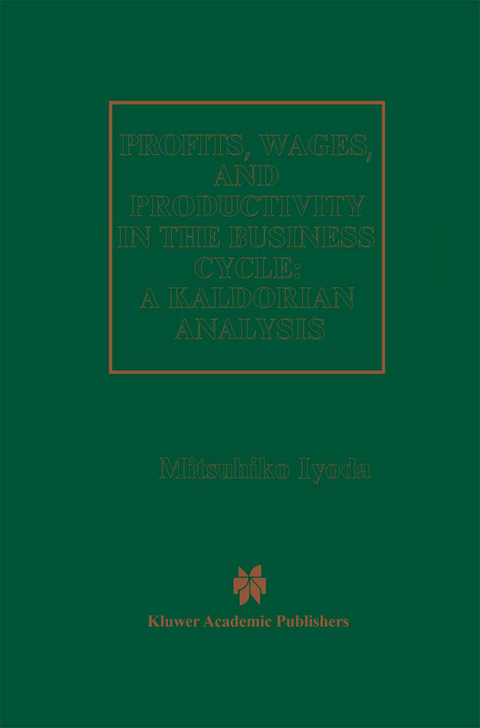
Profits, Wages and Productivity in the Business Cycle
Springer (Verlag)
978-0-7923-9868-4 (ISBN)
This book attempts to explain the changes in specifiC macroeconomic vari- ables-such as the relative share oflabor, the profIt rate, and the real wage rate in advanced capitalist economies-in relation to the influence of the business cycle in income distribution. In the pursuit of this inquiry, I fIrSt establish some stylized facts that I wish to investigate. The three countries discussed here-the United Kingdom, the United States, and Japan-are observed over a period of twenty-two years beginning in 1970, which covers at least three business cycles. This study makes several assumptions. First, there is no common feature on whether labor share moves countercyclically or procyclically; however, labor share increases in the fIrst year of contraction and decreases in the fIrst year of expansion, though there are some exceptions. Second, the profIt rate moves pro cyclically . Third, labor productivity moves pro cyclically and shows a symmetrical change; productivity sharply increases in the fIrSt year of expansion in terms of the growth rate and decreases in the fIrst year of con- traction. Fourth, the real wage rate has no common feature.
Finally, labor shares with and without "labor income of self-employment" imputed from self-employment income are almost parallel (except for Japan), and their move- ments are also similar, though they move differently for some years. To explain these facts, I examine three types of model (or theory)-Kaldorian theory, real-business-cycle theory, and new Keynesian theory-but the focus is on Kaldor's approach-hence, the book's subtitle, A Kaldorian Analysis.
1. Introduction.- 2. Some Facts About the Typical Business Cycle.- Some Facts in General.- Comparative Methods.- Results in Detail.- Factors Conditioning Interpretations.- Stylized Facts and Some Explanations of These Facts.- Appendix 2A: Methods of Imputation and Their Validity.- Appendix 2B: Data.- Appendix 2C: Tables.- 3. Kaldor’s Model.- Kaldor’s Model.- Interpretation.- Comments.- Historical Constancies.- Conclusions: Some Remarks on Kaldor’s Model.- Appendix 3A: A Neoclassical Model of Income Distribution — In Comparison with Kaldor’s Model.- 4. Kaldorian Models: Two Applied Models.- Model A: An Employment Decision Approach.- Model B: A Markup Pricing Approach.- Conclusions: Some Remarks on Models A and B.- Appendix 4A: Model A: On Solution.- Appendix 4B: Equations for Comparative Statics.- Appendix 4C: A Model (1976).- Appendix 4D: Model B: On Solution.- Appendix 4E: The First Partial Derivative and Growth-Rate Equations.- 5. Other Models.- The Real Business Cycle Theory.- The New Keynesian Theory.- Conclusions: Some Remarks on Each Theory.- 6. Conclusions 133.- Summary.- Methodological Research Agenda.- Determinants of Investment.- Government Policy and International Trade.- Test of the Models and Model Calibration.- Questions Remaining for the Future.- References.
| Erscheint lt. Verlag | 31.10.1997 |
|---|---|
| Zusatzinfo | XXIII, 160 p. |
| Verlagsort | Dordrecht |
| Sprache | englisch |
| Maße | 155 x 235 mm |
| Themenwelt | Geschichte ► Teilgebiete der Geschichte ► Wirtschaftsgeschichte |
| Wirtschaft ► Allgemeines / Lexika | |
| Wirtschaft ► Volkswirtschaftslehre ► Finanzwissenschaft | |
| Wirtschaft ► Volkswirtschaftslehre ► Makroökonomie | |
| Wirtschaft ► Volkswirtschaftslehre ► Mikroökonomie | |
| ISBN-10 | 0-7923-9868-8 / 0792398688 |
| ISBN-13 | 978-0-7923-9868-4 / 9780792398684 |
| Zustand | Neuware |
| Haben Sie eine Frage zum Produkt? |
aus dem Bereich


